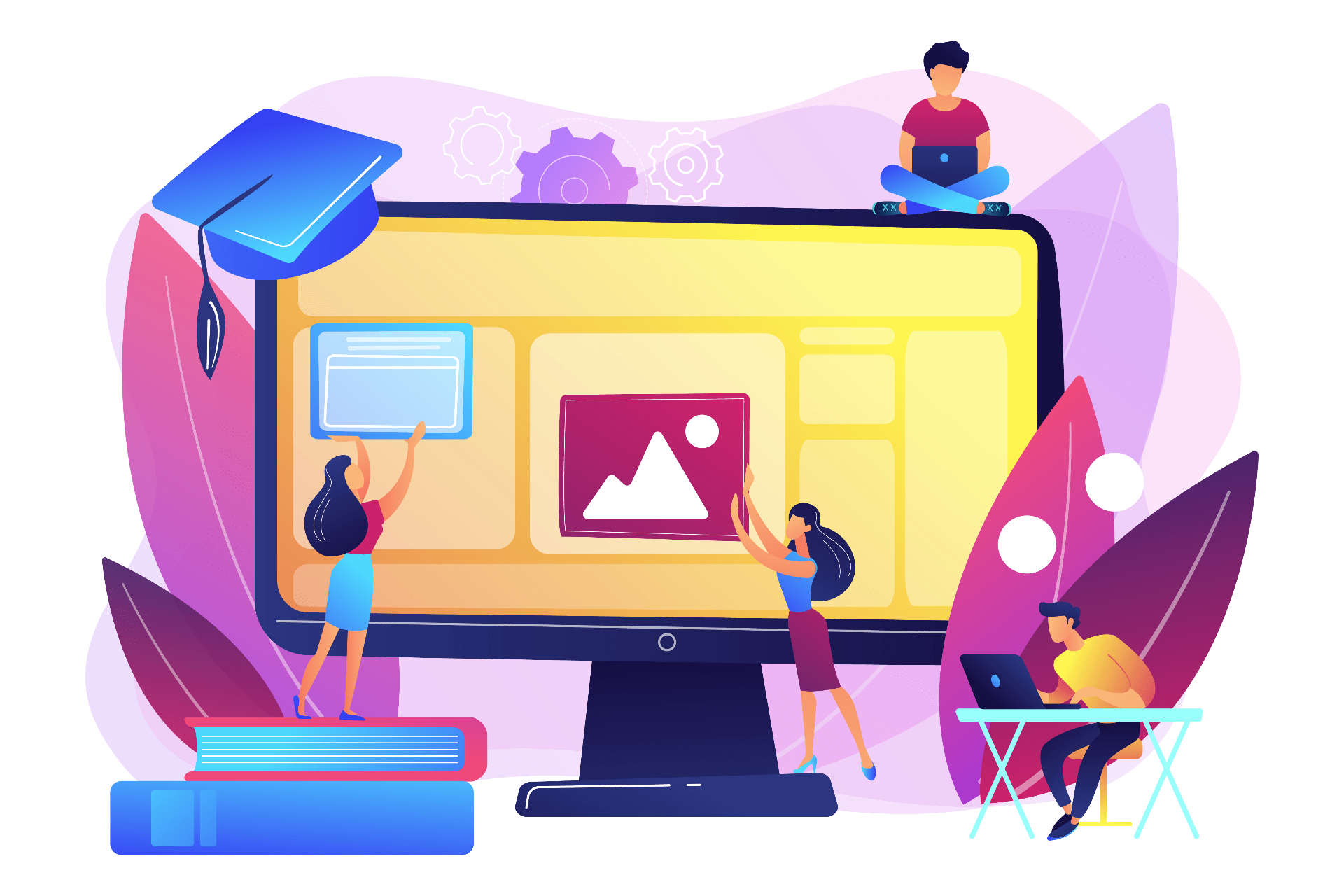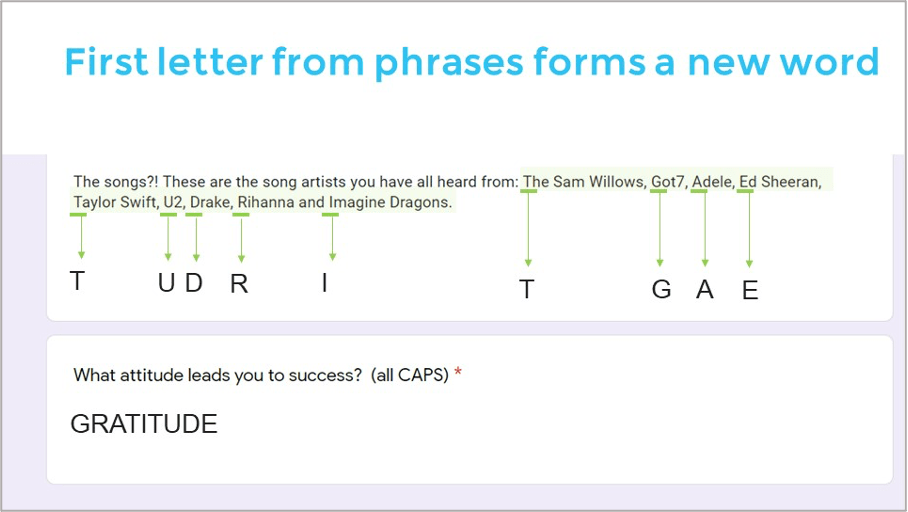Vyna SANI
Ridge View Residential College (RVRC)
Vyna shares some design guidelines for creating a digital breakout activity using Google Forms and offers suggestions for how educators can adapt this learning tool for their classrooms. Vyna presented these insights at the Teaching and Learning at Residential Colleges Colloquium of 2020 (TLRC 2020), held on 25 September 2020.

Enhancing learner engagement, encouraging motivation and inculcating problem-solving skills are some advantages of incorporating gamification in the learning process (Kapp, 2012; Nicholson, 2013). Gamification through escape room activities have been gaining popularity (Sanchez & Plumettaz‐Sieber, 2018), with the medical, and the science, technology, engineering and mathematics (STEM) disciplines being early adopters (Veldkamp et al., 2020).
A Google Forms-based digital breakout activity is a fantastic and free alternative to conventional physical escape rooms, giving the same learning benefits without the long preparation time and removing the headaches of adhering to COVID-19 safety protocols of a physical classroom.
Design Guidelines for Breakout Activities
Having conducted digital breakout activities with different target audiences in a synchronous context on Zoom to foster community bonding amongst College residents, here are my suggested “3C” design guidelines if you intend to initiate similar activities for your students.
(1) Customisation:
At its heart, the anatomy of a breakout activity involves a mission, solving clues and releasing locks. However, customising the content to the target audience is key in aligning the activity with your learning objectives (see Figures 1 and 2).


(2) Challenge:
The activity must challenge students, so as to stimulate active learning, arouse curiosity, and give the experience of “flow” and immersion described by Csikszentmihalyi and Csikszentmihalyi (1988) as they seek clues. For example, anagrams and ‘magic squares’ are some easy-to-create puzzles which serve as good digital breakout activities (see Figures 3 and 4).


(3) Camaraderie:
Students can form teams to solve the locks together, thus promoting collaboration and building camaraderie. Invite students to create Zoom screenshots as a visual representation of the camaraderie which would arise from going through a shared interactive experience (see Figure 5).

Incorporating Breakout Activities in Your Sessions
If you are keen to incorporate digital breakout activities, here are some tips and inspiration from approaches undertaken by other educators:
(1) Getting Started: Tips to Take Note
a. Invite students to introduce themselves before the activity to facilitate collaboration
b. Instruct students to activate their webcams and microphones to foster active participation.
c. Within each breakout team, designate one student, like a teaching assistant (TA), with the answers. This student will provide timely hints if the group gets frustratingly stuck while solving the locks. Alternatively, if you are the host on Zoom, join the various teams at different points to provide assistance. This also helps you review the difficulty levels of the locks you have designed, and to calibrate them for the next version, so that they are neither too difficult nor too easy.
(2) Variations for Educators
Use content from your module or assigned readings for clues, as these educators have done:
a. Educator-created. Elements from physical escape rooms can also be applied to digital breakout rooms. One such case study was documented by Ang et al. (2020), who detailed how their physical escape room, related to chemical bonding concepts, was .
b. Student-created. Wilson (2019) set student-created breakout activities as a cumulative assessment and curated some samples here.
c. Other non-classroom based uses of digital breakout activities. I have used the digital breakout activities to foster bonding amongst residents. Akers (2019) also used such activities to present meeting materials to staff in place of a normal physical meeting. Veach (2019) used a similar tool to conduct a university library orientation for first-year students.
Digital breakout activities are relatively simple for educators to create and adapt to their respective module learning objectives. More importantly, they can potentially make a positive impact in terms of fostering student engagement (see Figure 6), as well as breaking the monotony and isolation of self-paced studying in this intensified online learning environment.

 |
Vyna SANI is a Workplace Readiness lecturer at Ridge View Residential College. Vyna believes in utilising whole body learning methods such as games and drama with students She can be reached at vynasani@nus.edu.sg. |
References
Akers, M. (2019). Example Breakout Staff Meeting. https://sites.google.com/view/example-breakout-staff-meeting/home.
Ang, W. J., Ng, Y. N., & Liew R. S. (2020). Physical and digital educational escape room for teaching chemical bonding. Journal of Chemical Education, 97(9), 2849–2856. https://doi.org/10.1021/acs.jchemed.0c00612
Csikszentmihalyi, M, & Csikszentmihalyi, I. S. (Eds.) (1988). Optimal experience: Psychological studies of flow in consciousness. New York: Cambridge University Press.
Kapp, K. M. (2012). The gamification of learning and instruction: game-based methods and strategies for training and education. San Francisco: John Wiley & Sons.
Nicholson, S. (2013). Exploring gamification techniques for classroom management. Paper presented at Games+Learning+Society 9.0. Madison, WI, June 2013 [online]. http://scottnicholson.com/pubs/gamificationtechniquesclassroom.pdf
Sanchez, E., & Plumettaz‐Sieber, M. (2018). Teaching and learning with escape games from debriefing to institutionalization of knowledge. In International Conference on Games and Learning Alliance (pp. 242–253). Cham, Switzerland: Springer.
Veach, C. C. (2019). Breaking out to break through: Re-imagining first-year orientations. Reference Services Review, 47(4), 556-569. http://doi.org/10.1108/RSR-06-2019-0039
Veldkamp, A., van de Grint, L., Knippels, M. C. P. J., & van Joolingen, W. R. (2020). Escape education: A systematic review on escape rooms in education. Preprints, 2020. http://doi.org/10.20944/preprints202003.0182.v1
Wilson, K. A. (2019). Student-Created Digital Breakouts. Presented at International Society for Technology in Education (ISTE). Philadelphia, 26 June 2019. https://conference.iste.org/2019/program/search/detail_session.php?id=112192587.

